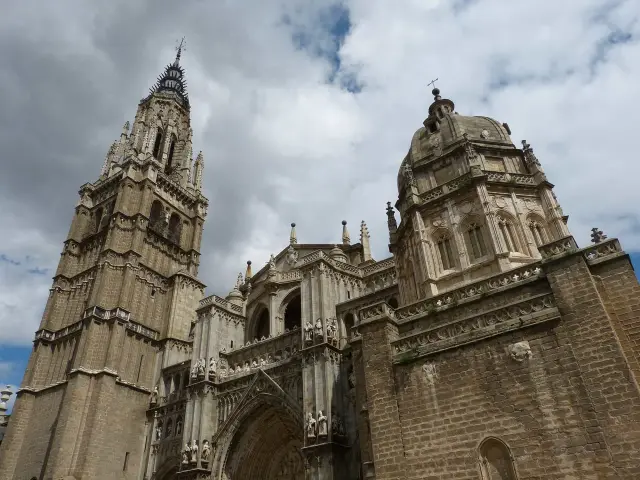THESE are the 12 Spanish cathedrals with UNESCO heritage sites, including the world’s most visited.
Spain is the country with the fifth most UNESCO heritage sites in the world, with over 50 including 12 cathedrals.
Although the religious buildings are spread across Spain, one region stands out for its prestigious cathedrals.
A quarter, or four, of the 12 UNESCO religious sites are in Castilla y Leon.
The first in the region to receive the honour was Burgos cathedral, which claimed the title in 1984 thanks to its impressive gothic style.

Just one year later Avila Cathedral and Segovia old town received UNESCO status, Avila for the building’s romanesque and gothic architecture, which makes it one of the most unique in Spain.
Segovia old town was also included in the list that year thanks to its impressive aqueduct, alcazar and cathedral.
In 1988, Spain claimed its next UNESCO title, with Salamanca’s casco antiguo (old town) achieving the recognition thanks to its pair of stunning cathedrals.
The Old Cathedral is a 13th century building which combines gothic and roman elements while the New Cathedral is an ode to gothic, baroque and renaissance architecture.
Muchlike Avila and Segovia, Santiago de Compostela also gained UNESCO status in 1985.

The city’s 11th century cathedral is one of the largest christian temples in the world and is frequently visited by pilgrims taking part in the Camino de Santiago.
In 1986, UNESCO granted recognised status to Teruel’s mudejar quarter, including its imposing cathedral.
Santa Maria de Mediavilla is a stunning mix of the cathedral’s romanesque roots and mudejar rejuvenation, forming one of the most interesting religious buildings in Spain.
That same year, Toledo’s historic quarter also gained UNESCO World Heritage status thanks to the impressive Santa Maria Cathedral which took over 250 years to complete.
Also in 1986, Caceres’ Concatedral de Santa Maria gained World Heritage recognition.
A 16th century building constructed using granite is a strong and imposing architectural feat.
Sevilla’s cathedral, alcazar and archives entered into the UNESCO list in 1987.

It’s no surprise that the religious building made the list, as the cathedral is the world’s largest gothic temple housing both the emblematic Giralda tower and the tomb of Christopher Columbus.
In 1996, Cuenca was recognised by UNESCO for its old town replete with hanging houses and the Catedral de Santa Maria y San Julian.

Using a mix of various styles, it has one of the most unique and curious facades in all of Spain.
Just before we ushered in the new millennium in 1999, Tenerife’s San Cristobal de la Laguna gained UNESCO recognition, in part thanks to its colourful manor houses and cathedral.
Then in 2001, Zaragoza’s Seo del Salvador de su Epifania and the Basilica del Pilar also gained the coveted status.
Also in Andalucia is Baeza cathedral, which gained World Heritage status in 2003.
Dating back to the eighth century, it is an undiscovered gem in Andalucia.








